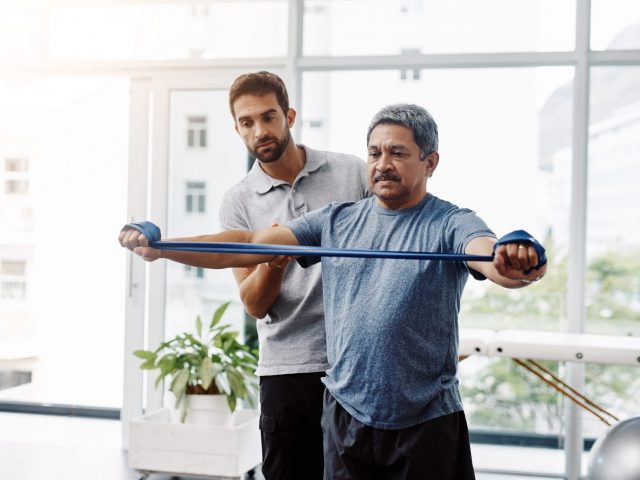In the realm of health and well-being, physical therapy stands as a stalwart guardian, diligently working to prevent injuries and aiding in the rehabilitation process when the unexpected occurs. With its multifaceted approach and evidence-based techniques, physical therapy plays a pivotal role in enhancing our overall quality of life. In this article, we delve into the significance of physical therapy in both injury prevention and rehabilitation, exploring how it empowers individuals to regain strength, mobility, and confidence.
The Foundation of Injury Prevention: Knowledge and Education
Injury prevention is a proactive endeavor, rooted in understanding the mechanics of our bodies and the potential risks they face. Physical therapists are educators at heart, empowering patients with the knowledge needed to make informed decisions about their lifestyles, activities, and movements. By teaching proper techniques for lifting, carrying, and exercising, physical therapists equip individuals with the tools to minimize the risk of injuries.
Additionally, they assess ergonomic factors in workplaces and daily routines, providing tailored advice to prevent strains, sprains, and overuse injuries. Whether it’s suggesting posture adjustments or recommending regular breaks during long periods of sitting, these professionals help people make subtle yet impactful changes that can prevent major injuries down the line.
Customized Exercise Regimens: A Shield Against Injuries
Physical therapists are experts in designing personalized exercise regimens that not only aid in recovery but also fortify the body against potential injuries. These regimens are carefully crafted to address specific weaknesses, imbalances, or vulnerabilities an individual might have. By targeting these areas, physical therapists build strength, flexibility, and resilience, creating a robust defense against injuries.
What sets physical therapy apart is its holistic approach. Instead of solely focusing on the affected area, therapists consider the entire kinetic chain. For example, if you’re rehabilitating from a knee injury, your physical therapist might also address hip and ankle stability to ensure a comprehensive recovery and reduce the risk of future injuries.
Restoring Function and Confidence through Rehabilitation
When injuries do occur, a physical therapist steps onto the stage as a beacon of hope. From minor sprains to complex surgeries, rehabilitation under the guidance of a skilled physical therapist can mean the difference between a full recovery and lingering limitations.
Rehabilitation journeys are highly personalized, taking into account an individual’s unique circumstances, goals, and medical history. Physical therapists collaborate with patients to set realistic milestones and tailor treatment plans accordingly. Through a combination of manual therapies, therapeutic exercises, and cutting-edge modalities, they facilitate the healing process, gradually restoring mobility, strength, and function.
Moreover, physical therapy isn’t just about the physical aspects of recovery. It’s about rebuilding confidence and mental resilience. Suffering an injury can take a toll on one’s emotional well-being, leading to anxiety and fear about re-engaging in activities. Physical therapists provide the emotional support needed to overcome these hurdles, fostering a sense of empowerment and determination.
Innovations Transforming Rehabilitation
As technology advances, so does the landscape of physical therapy. Innovative tools such as virtual reality and wearable devices are being integrated into treatment plans, enhancing the rehabilitation process. Virtual reality, for instance, can simulate real-life scenarios to help patients regain balance and mobility in a controlled environment. Wearable devices provide real-time data on movements and progress, allowing therapists to fine-tune treatment plans for optimal outcomes.

The Collaborative Nature of Rehabilitation
Physical therapists are skilled collaborators, working closely with orthopedic surgeons, physicians, and other healthcare professionals to ensure a seamless continuum of care. This interdisciplinary approach enables a well-rounded understanding of the patient’s needs and facilitates the best possible outcomes. Whether it’s a post-surgery rehabilitation plan or a strategy to manage chronic pain, physical therapists contribute valuable insights and interventions.
Empowerment Through Knowledge and Healing
Injury prevention and rehabilitation are two sides of the same coin, and physical therapy is the bridge that connects them. It empowers individuals with the knowledge to protect themselves from potential harm, and it guides them through the recovery process when injuries occur. By fostering physical strength, mental resilience, and confidence, physical therapists play a vital role in helping people regain control of their lives after setbacks.
In conclusion, physical therapy is not just a treatment—it’s a journey of self-discovery, healing, and growth. It exemplifies the power of the human body to adapt, recover, and thrive with the right guidance. So whether you’re an athlete looking to prevent injuries or someone on the road to recovery, remember that physical therapy is a steadfast companion on your path to well-being. If you are seeking a source of inspiration and guidance about physical therapy in injury prevention, visit Ultimate Horse Sites for further info.





